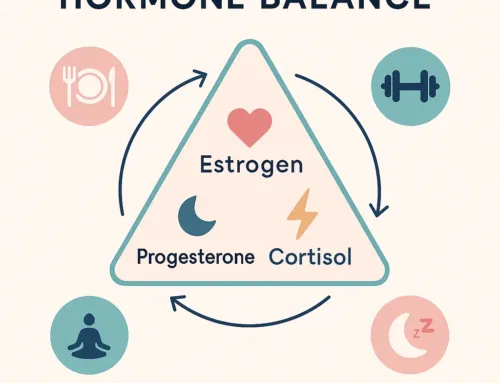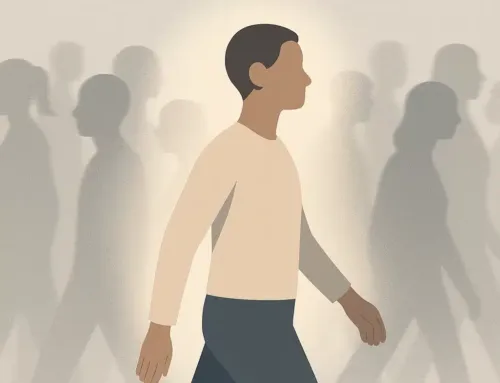
Approx. read time: 6.4 min.
Post: One Step in the World, One Step in the Spiritual World: The Art of Living in Two Realities
There’s a saying, passed down in various forms across different traditions: “One step in the world, one step in the spiritual world.” On the surface, it sounds poetic, even mystical. But underneath, it carries something deeply practical — a framework for how to live with both presence and perspective.
It points to a challenge we all face: how to be grounded in daily life without getting consumed by it, and how to stay connected to deeper meaning without floating away from reality. This article breaks that idea wide open, examining what it means to walk with one foot in each world — and why it matters more than ever.
The Two Worlds We Live In
The “world” in this phrase refers to the physical, external life: work, relationships, money, survival, routine. It’s where we earn a living, raise families, chase goals, and solve real problems.
The “spiritual world” is everything less tangible: our conscience, values, intuition, connection to something greater — whether you call it God, the universe, inner truth, or higher self. It’s where we reflect, search, and find clarity about who we are and why we’re here.
These two worlds often seem to pull in different directions. The world demands action. The spiritual side asks for stillness. The world pushes competition. The spirit whispers compassion. The world rewards results. The spirit honors intention.
Yet the real task isn’t to choose between them — it’s to hold both.
Why the Balance Matters
Living only in the material world — chasing status, money, and external validation — leaves us restless. The rewards are fleeting, the pace relentless. You might “win” by worldly standards and still feel hollow inside.
On the other hand, retreating entirely into the spiritual can lead to escapism. If you detach too far, you risk becoming disconnected from the people and problems around you. You might feel calm but ineffective — a bystander in life.
To live with one foot in each world is to engage with life while staying rooted in purpose. It means participating without being possessed, acting without forgetting who you are.
Psychological View: Inner Balance
Psychologically, we need both external function and internal fulfillment. A life of pure achievement with no reflection can lead to burnout and existential anxiety. A life of reflection without action can slip into stagnation.
Therapists talk about integration — aligning our outer actions with our inner values. It’s not about being perfect; it’s about being real. When your life is an expression of both your outer goals and inner compass, it feels coherent. That’s mental health.
Philosophy: The Oldest Struggle
This tension isn’t new. Philosophers across cultures have wrestled with it for centuries.
- Plato described the world of appearances vs. the world of forms — the higher truths behind the surface.
- Stoics like Marcus Aurelius taught that we should do our duty in the world but remain emotionally independent of it.
- Existentialists like Kierkegaard and Camus explored how to live authentically in an absurd or indifferent world.
All these traditions circle the same insight: meaning isn’t found by escaping the world, but by facing it with clarity and depth.
Religion: In the World, Not Of It
Religious traditions also echo this dual focus.
- In Christianity, Jesus says, “Be in the world, but not of the world.” The message: live here, but don’t let it define you.
- In Islam, there’s the concept of dunya (this life) and akhira (the hereafter). Believers are urged to act responsibly in both realms.
- Buddhism teaches detachment — not withdrawal, but non-attachment to outcomes. Act, but don’t cling.
- Judaism emphasizes “Tikkun Olam” — the spiritual responsibility to repair and uplift the world.
Each of these teachings offers the same paradox: the path to spiritual truth goes through the world, not around it.
The Modern Landscape: Where It Gets Harder
Today, the divide between these two worlds feels sharper than ever.
We’re surrounded by noise — social media, politics, consumerism, productivity culture. Everything is optimized for attention, speed, and comparison. There’s little space for stillness, reflection, or values.
At the same time, there’s a hunger for something more. The rise of mindfulness apps, meditation retreats, therapy, and spiritual exploration points to a deep need for reconnection.
We live in a world that rarely rewards spiritual alignment. But that doesn’t make it less vital — it makes it more urgent.
How to Walk with One Foot in Each World
This isn’t an abstract ideal. It’s something you can practice. Here’s what that might look like in daily life:
1. Work With Purpose
Whatever your job is, approach it with integrity. It’s not always about finding a “spiritual” job — it’s about bringing spiritual values into your work: honesty, service, humility, growth.
2. Stay Grounded, Not Numb
Don’t escape into spirituality to avoid the hard parts of life. Use it to face them better. Meditation, prayer, or self-reflection should bring you back into the world with more clarity, not pull you out of it.
3. Check Your Compass
Regularly ask: Why am I doing this? Are your actions aligned with your deeper beliefs, or are you on autopilot? That one question can recalibrate everything.
4. Protect Inner Space
Carve out time to be quiet. Journal. Meditate. Walk alone. Read something meaningful. Even ten minutes a day can reconnect you with the part of yourself that isn’t chasing anything.
5. Serve Something Bigger
Help someone. Mentor. Donate. Volunteer. When you act from compassion, you stand in both worlds — doing something physical that feeds something eternal.
Crisis Reveals the Truth
When life crashes — through loss, illness, death — the illusion of control fades fast. The material world doesn’t always offer comfort or answers. That’s when the spiritual step matters most.
People who’ve nurtured a spiritual connection — even quietly — often weather crises with more resilience. Not because they’re immune to pain, but because they’re anchored in something deeper than circumstance.
In a way, the spiritual foot is the one you lean on when the ground under the worldly foot disappears.
Artists and Creatives: Translators of the Two Worlds
Art, music, literature — these are bridges between the seen and unseen. Creatives often live with one foot in each world by necessity. They observe the raw material of life and transform it into something meaningful.
A great novel, song, or painting isn’t just technically skilled — it carries soul. That’s the essence of walking in both worlds: using worldly tools to express spiritual truth.
Final Thought: This Is the Real Work
To live with one step in the world and one in the spiritual world isn’t easy. It’s not a balance you find once — it’s a rhythm you maintain. You’ll wobble. You’ll fall. That’s human.
But the effort to hold both — to stay awake while moving forward — is where life gets real. It’s where peace and purpose begin to overlap.
Not everything that matters can be measured. Not everything that is measured matters. The wisdom is in knowing the difference — and walking accordingly.
In a world that moves fast and forgets easily, this way of living is a quiet rebellion. And a powerful one.
Related Videos:
Related Posts:
How to Stay Grounded When You’re Triggered: A Guide for Everyday Life









